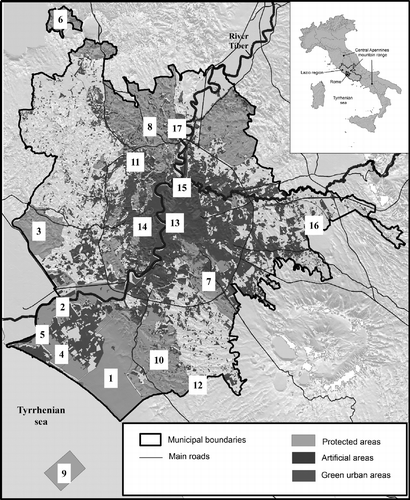Figures & data

Table I Key examples of valuable plant species recorded in the coastal and subcoastal sector of the study area.
List of the present-day vascular flora of metropolitan Rome.
Supplemental material
Register now or learn more
Open access

People also read lists articles that other readers of this article have read.
Recommended articles lists articles that we recommend and is powered by our AI driven recommendation engine.
Cited by lists all citing articles based on Crossref citations.
Articles with the Crossref icon will open in a new tab.